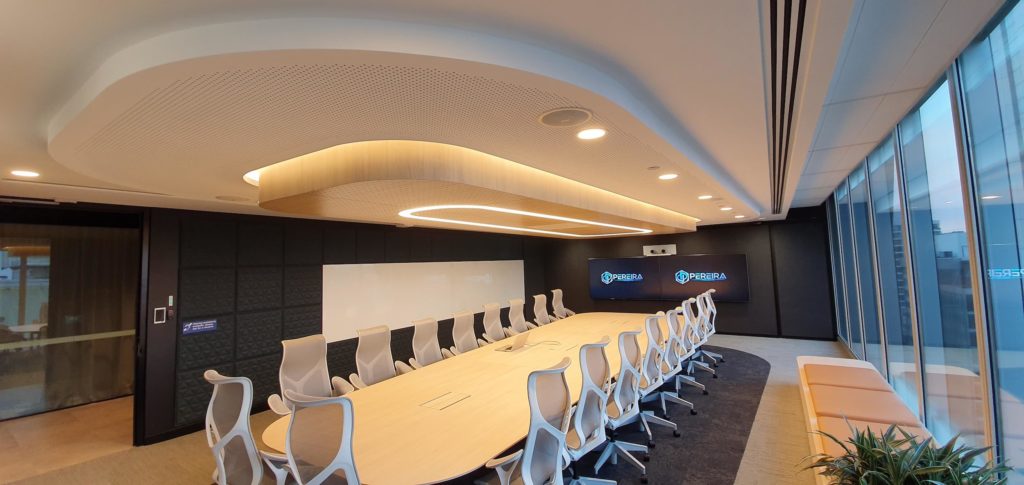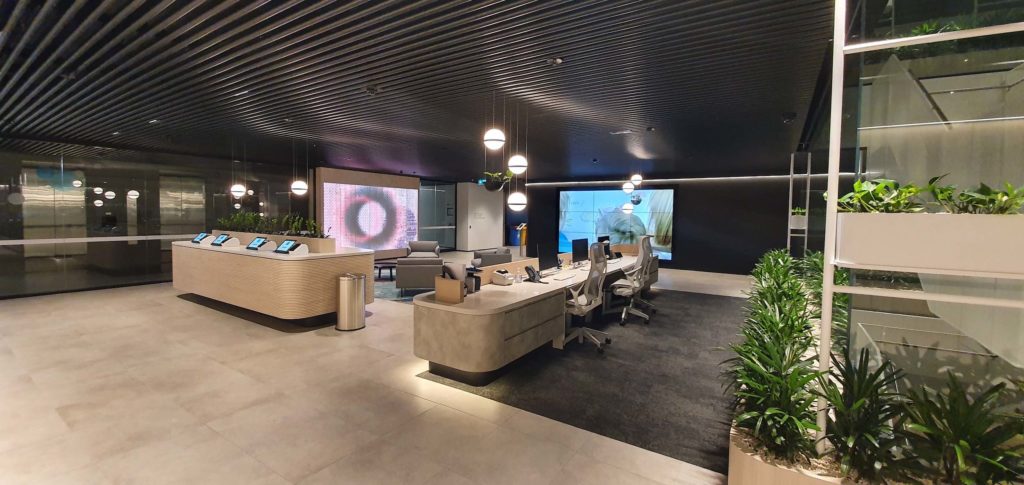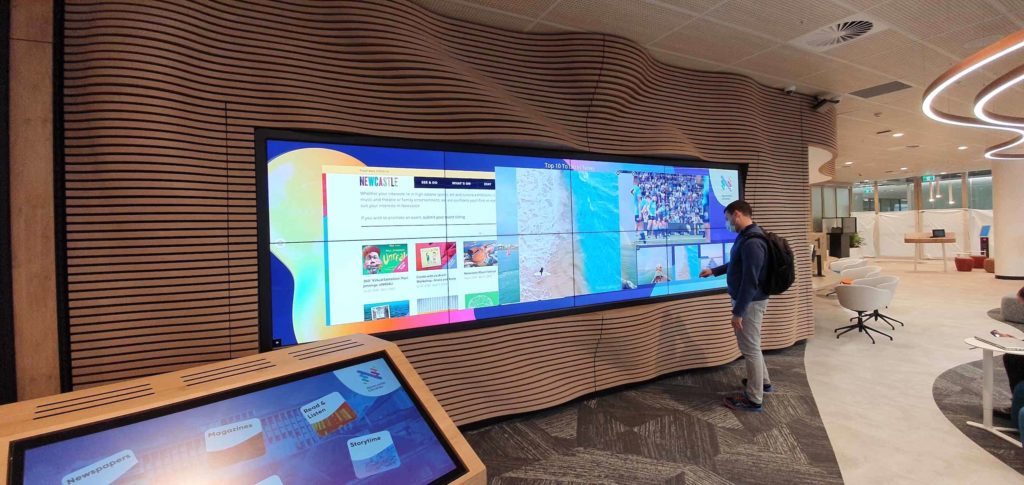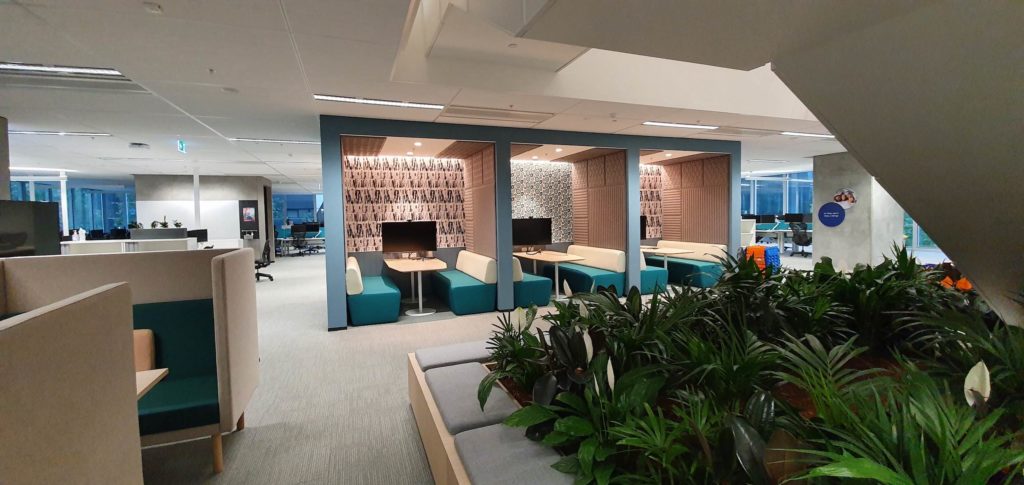Integration
18 Nov 2020
The Local Consultancy – Pereira Projects
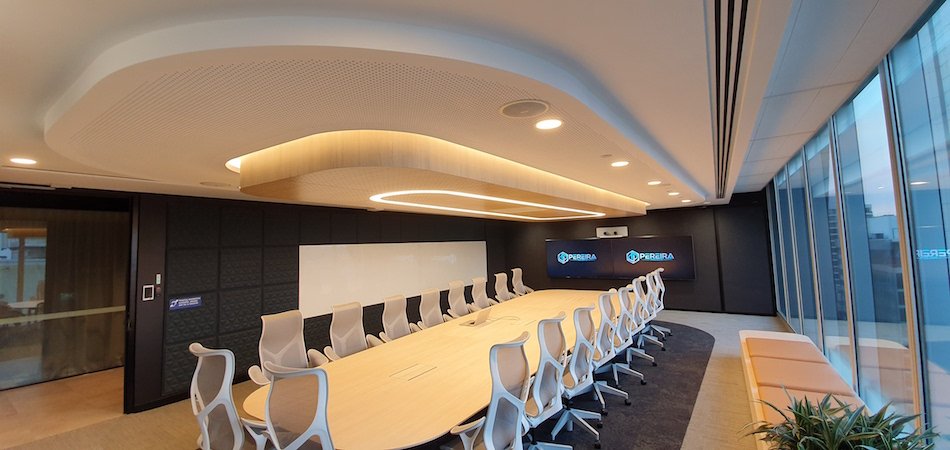
Subscribe to CX E-News
Sydney AV and ICT technology consultancy Pereira Projects started life three years ago when principal consultant Jamie Pereira hung out his shingle at the behest of customers he was already servicing.
Western Sydney University kickstarted Pereira’s growing presence in technology for education, and a slew of tertiary, corporate, and government customers followed.
2020 sees Pereira Projects continue to grow, after bringing on partner Jack Wilson in late 2019. I sat down (via Zoom) with Jamie and Jack to talk COVID reality, business opportunities, and the direction of future AV projects…
Pereira Projects has always been nimble and forward-looking by design, which has helped them weather the COVID-19 storm. “We’ve always worked from home,” explains Jamie Pereira.
“We embraced future ways of working before COVID. We have people working with us interstate, we manage them remotely, and it’s just easy. We don’t have the overheads bigger consultancies do, which means we can provide our clients our full focus.
“That’s why we have continuing relationships with the same clients – owning projects from end to end.”
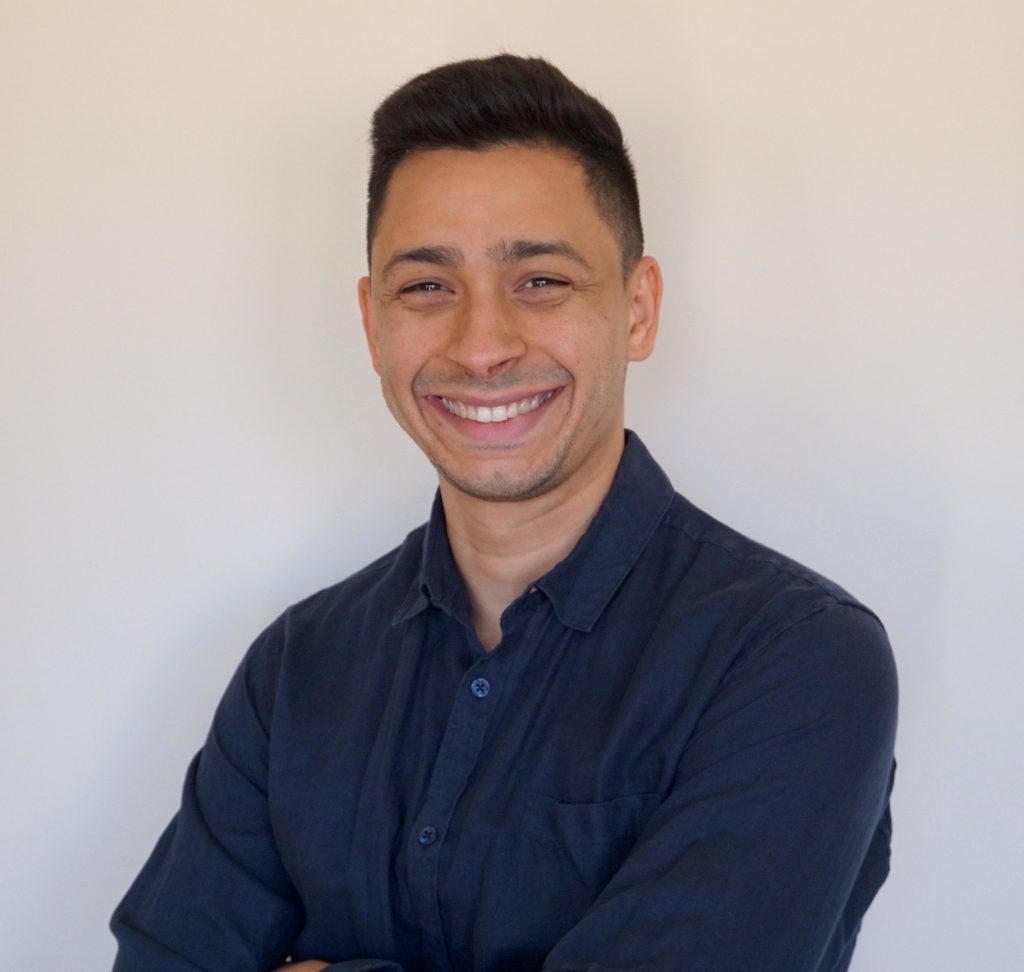
As Pereira has grown, they’ve chosen to bring in contractors and specialists on a project-by-project basis, as opposed to appointing new senior consultants to the business.
It’s allowed them to pivot quickly in the ever-changing COVID environment and respond with expert advice that was not necessarily within their existing fields of expertise.
“A good example of this is our work in room acoustics,” illustrates Jack. “Six months ago, we hardly did any work in that space, and now it’s one of our biggest growth areas.
“We’ve partnered with the best acoustics specialists in Australia, and we’re doing acoustic reports on spaces and offering solutions to improve the room.
“This has been driven by all the fancy office buildings full of glass and hard surfaces where they’re bringing in cameras and mics for video conferencing.
“Without treatment, the audio is awful and often the ambient light is terrible as well. Due to current circumstances, we’re now having more say in lighting and lighting control, as well as acoustic treatment.
“Our sub-consultant model means we can flex with the job requirements, and our clients are happy they’re getting specialist advice while still having just one point of contact for the entirety of their technology footprint.”
This rapid change in service structure due to market demand was turned around quickly by the small and nimble Pereira team. “After we decided to bring in acoustics and lighting, two days later it was part of our portfolio,” relates Jack.
“Being a dedicated team solely focused on the technology piece, we have an unrivalled ability to move with the market. I can’t see how you’d do that at a multinational building services company; there’s just too much red tape.
“We’re now approaching our designs as ‘intelligent spaces’. It’s all about signal flow in all its forms. We explain to the client it’s not just the AV, but the whole space we can help with.
“We’re including sensors, metering, space utilisation measurements, and integrating everything into other building systems, enhancing other metrics like energy usage.”
The Pandemic Impact
As March 2020 unfolded, how did the COVID crisis affect Pereira Project’s work?
“A lot of our work in universities took a hit early on,” explains Jamie. “Though we were lucky as one of our major tertiary clients doesn’t have a huge reliance on international students.
“A lot of big corporate projects went on hold, and even with things relaxing a bit more now, corporate tenders for design and consulting have slowed down.
“We’ve been very fortunate in that we’re currently working on a large, national tertiary project across campuses to fix disjointed systems, migrate to the cloud, and develop an ‘as a service’ model, which is a project that will last for some time.
“In some ways, tertiary projects have been helped along by the absence of students, and we’ve been able to turn around projects much faster. That’s also because there’s more focus from customers within these organisations.”
“I’m seeing a lot of projects being pushed forward,” adds Jack. “Along with that, I’m also seeing condensing tender time frames and shorter procurement schedules. There’s a push on to get work done before the end of year.
“Interestingly, instead of being brought in to do a pretty standard ‘design and flip 50 rooms’, we’re often being engaged to conduct feasibility studies or thoroughly audit existing AV and IT systems to determine how a client can get the longest life and best value from what they already have.
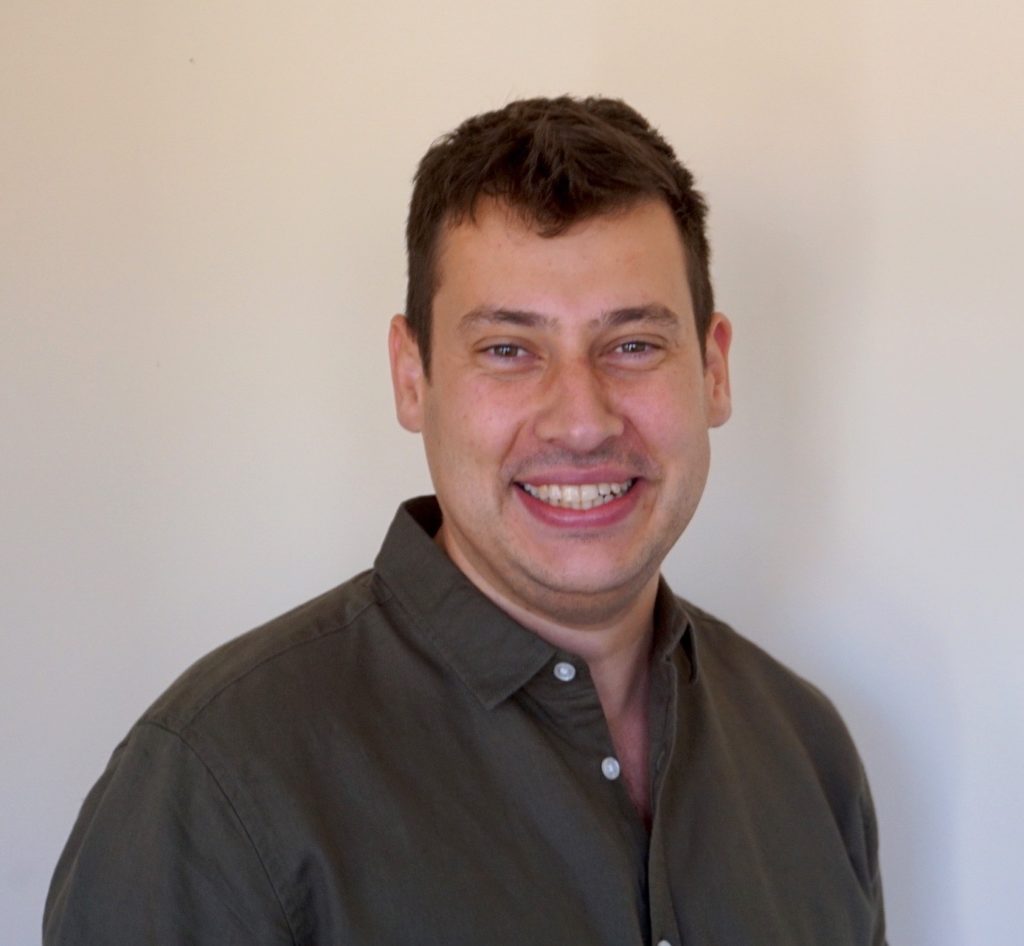
“There’s a lot of ‘Value Engineering’ going on, as budgets are often half what they were. AV gear with long life cycles like mics and speakers are getting refreshed, not replaced, and we’re adding value to that workflow with project management.
“We start with design, then do value management, and are engaged for the project management piece during construction, which mitigates risk and provides our clients with some great outcomes”
We start with design then do value management and are engaged for the project management piece during construction which mitigates risk and provides our clients with some great outcomes
What Clients Want
The hot buzzwords in education, from secondary through tertiary, are ‘hybrid’ and ‘blended’ learning. Everyone wants to implement it, though it’s clear not everyone agrees on what it actually means.
“These terms get thrown around when educators want to bring classrooms online,” clarifies Jack. “But what they mean by it could be anything from the ability to log into Zoom, right up to two-way collaboration rooms with ceiling tile mics, cameras with different presets, and far-end collaboration.
“There is no perfect technical solution to all of these requirements at the moment. We’re doing some proof-of-concept builds, and it’s almost like an arms race.
“Everyone’s trying to create a blended environment that ‘just works’. Most stakeholders don’t understand that you can’t just throw a mic and camera and speakers in the room; the platform you choose today will more than likely be limited to a handful of certified peripheral devices.
“What we are trying to do is develop solutions that work for in-room clients and external clients who opt to BYOM (Bring Your Own Meeting).”
“Are you talking about bidirectional communication, or broadcasting to your students? In the digital classroom space, COVID has rapidly sped up adoption.
“This is exactly what happened when we all started talking about ‘flexible working’,” adds Jamie. “We all want to be flexible, but no-one ever really knew what that actually meant.
“The challenge now is talking to the right people in your client’s organisation; the ones who know what‘s needed, what’s possible, and what’s not.”
The challenge is talking to the right people in your client’s organisation – the ones who know what‘s needed, what’s possible, and what’s not.
The New Environment
As corporate and education alike have rushed to implement workflows based on Teams, Zoom, or Webex, there’s been a nationwide crash course in technology for video conferencing.
“There’s been an understandable rush to implement systems that won’t necessarily be their final form,” observes Jamie. “It got everyone online, and they’re working with what they had.
“These systems now need to evolve. The organisations that stop and think through their systems properly will come out in front, not necessarily the ones who are first to market.”
“I’ve seen a lot of off-the-shelf solutions implemented where the client didn’t see the need for a consultant,” Jack shares. “They’ve bought a bundle that some integrators are offering. But more thought needs to be put into it.
“Some of these kits are using products that we know are great, but aren’t certified for Teams or Zoom. That means if there’s a major upgrade to either software platform, then the systems could fall over.
Some places are spending big and getting everything online, and in six to 12 months’ time they’re going to have to spend the same if not more to fix it
“Over the next year or two, there’s going to be a lot of tweaks and changes because there are so many variables. We’re already seeing it and getting pulled into jobs to sort it out.
“It’s the middle and larger scale rooms with flexibility at most risk.”
“Measure twice and cut once,” concludes Jamie. “You don’t want to be reactive, no matter what.
“Some places are spending big and getting everything online, and in six to 12 months’ time they’re going to have to spend the same if not more to fix it.
“It’s frustrating, as I hate seeing money wasted, especially when it is not hard to get it right the first time. But I guess that’s just more opportunity for us to help our clients, which is good.”
Pereira Projects
www.pereiraprojects.com.au
CX Magazine – November 2020
LIGHTING | AUDIO | VIDEO | STAGING | INTEGRATION
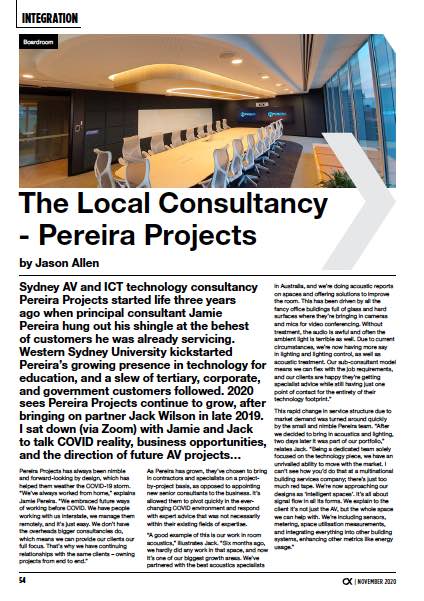
Entertainment technology news and issues for Australia and New Zealand
– in print and free online www.cxnetwork.com.au
© VCS Creative Publishing
Subscribe
Published monthly since 1991, our famous AV industry magazine is free for download or pay for print. Subscribers also receive CX News, our free weekly email with the latest industry news and jobs.

